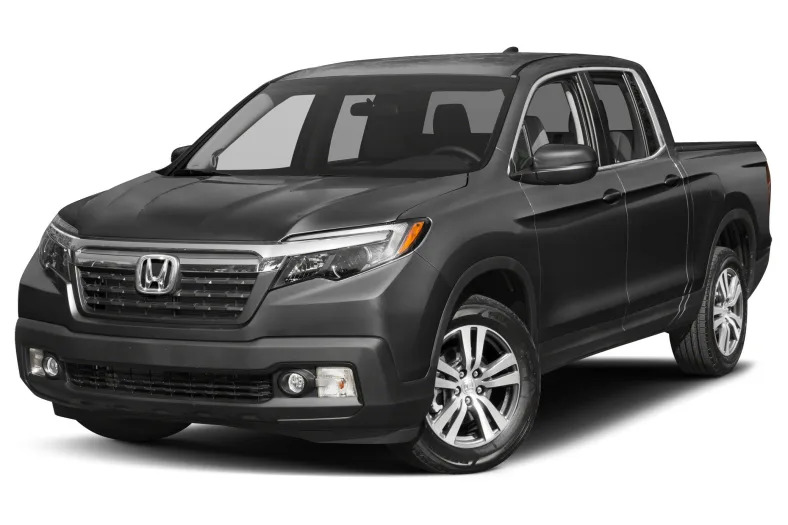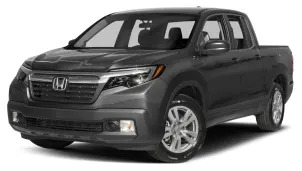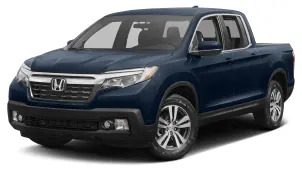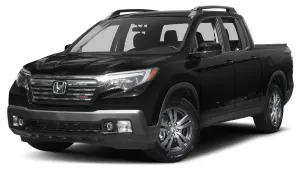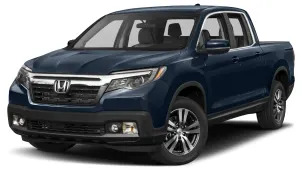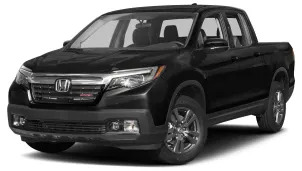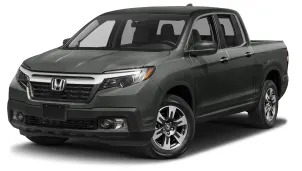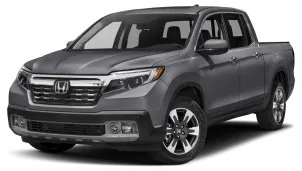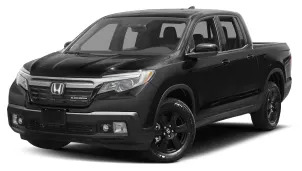RTL All-Wheel Drive Crew Cab 5.3 ft. box 125.2 in. WB
2017 Honda Ridgeline
The all-new 2017 Honda Ridgeline is a unique pickup. Unique is a word that suffers a lot of misuse in the automotive lexicon. For example, we hear the term “very unique” in connection with some rarefied vehicle. But the fact is the word is absolute, referring to something that's one of a kind.
Thus, in the world of pickup trucks, unique can only be used in connection with the Honda Ridgeline. Returning from the brink of extinction, it's the only unitbody pickup in the business: the chassis is integrated with the body. All the others are body-on-frame: the chassis and body are worked up separately, and meet late in the assembly process.
The distinction is important, for two key reasons. First, though traditional body-on-frame vehicles are rugged and capable of absorbing more punishment, as in off-road, heavy hauling or heavy towing, unitbodies generally have a higher chassis rigidity index. That was true of the first-generation Ridgeline, and the 2017 redesign is even stiffer, with a 28 percent increase in torsional rigidity, according to Honda.
Second, a unitbody will be considerably lighter than its body-on-frame counterpart of similar size. That's why all contemporary passenger cars are unitbodies.
The 2017 Honda Ridgeline shares much of its structural foundation with the latest Honda Pilot SUV, as well as its 3.5-liter V6 engine and 6-speed automatic transmission. The Ridgeline chassis is based on front-wheel drive, with the option of all-wheel drive.
The 2017 Ridgeline offers more power on tap than in the previous generation: 280 horsepower, 262 pound-feet of torque.
Fuel economy improves as well, and Honda claims best-in-class for this: 19 mpg City, 26 Highway with front-wheel drive, according to the EPA, 18/25 mpg City/Highway with all-wheel drive. Best-in-class is a little misleading, however, since it applies to competing V6 trucks. It ignores four-cylinder gasoline engines, as well as the GM diesels, which are projected to achieve 21 mpg in the city, 30 mpg on the highway.
The 2017 Ridgeline is bigger than the first generation. More cargo bed capacity, with room between the fender wells for a 4 x 8 slab of building material. Higher payload rating: 1584 pounds. And the roomiest interior in its class, according to Honda.
This second-generation Ridgeline retains two popular features that distinguished the original: the two-way tailgate and the in-bed lockable trunk. And it adds new tweaks, including one sure to score with tailgate party aficianados: available speakers in the cargo bed walls.
Full Review
Full Review
Unique is a word that suffers a lot of misuse in the automotive lexicon. For example, we hear the term “very unique” in connection with some rarefied vehicle. But the fact is the word is absolute, referring to something that's one of a kind.
Thus, in the world of pickup trucks, unique can only be used in connection with the Honda Ridgeline. Returning from the brink of extinction, it's the only unitbody pickup in the business: the chassis is integrated with the body. All the others are body-on-frame: the chassis and body are worked up separately, and meet late in the assembly process.
The distinction is important, for two key reasons. First, though traditional body-on-frame vehicles are rugged and capable of absorbing more punishment, as in off-road, heavy hauling or heavy towing, unitbodies generally have a higher chassis rigidity index. That was true of the first-generation Ridgeline, and the 2017 redesign is even stiffer, with a 28 percent increase in torsional rigidity, according to Honda.
Second, a unitbody will be considerably lighter than its body-on-frame counterpart of similar size. That's why all contemporary passenger cars are unitbodies.
The 2017 Honda Ridgeline shares much of its structural foundation with the latest Honda Pilot SUV, as well as its 3.5-liter V6 engine and 6-speed automatic transmission. The Ridgeline chassis is based on front-wheel drive, with the option of all-wheel drive.
The 2017 Ridgeline offers more power on tap than in the previous generation: 280 horsepower, 262 pound-feet of torque.
Fuel economy improves as well, and Honda claims best-in-class for this: 19 mpg City, 26 Highway with front-wheel drive, according to the EPA, 18/25 mpg City/Highway with all-wheel drive. Best-in-class is a little misleading, however, since it applies to competing V6 trucks. It ignores four-cylinder gasoline engines, as well as the GM diesels, which are projected to achieve 21 mpg in the city, 30 mpg on the highway.
The 2017 Ridgeline is bigger than the first generation. More cargo bed capacity, with room between the fender wells for a 4 x 8 slab of building material. Higher payload rating: 1584 pounds. And the roomiest interior in its class, according to Honda.
This second-generation Ridgeline retains two popular features that distinguished the original: the two-way tailgate and the in-bed lockable trunk. And it adds new tweaks, including one sure to score with tailgate party aficianados: available speakers in the cargo bed walls.
Hide Full Review
Retail Price
| Engine | 3.5L V-6 |
| MPG | 18 City / 25 Hwy |
| Seating | 5 Passengers |
| Transmission | 6-spd auto w/OD |
| Power | 280 @ 6000 rpm |
| Drivetrain | all wheel |

